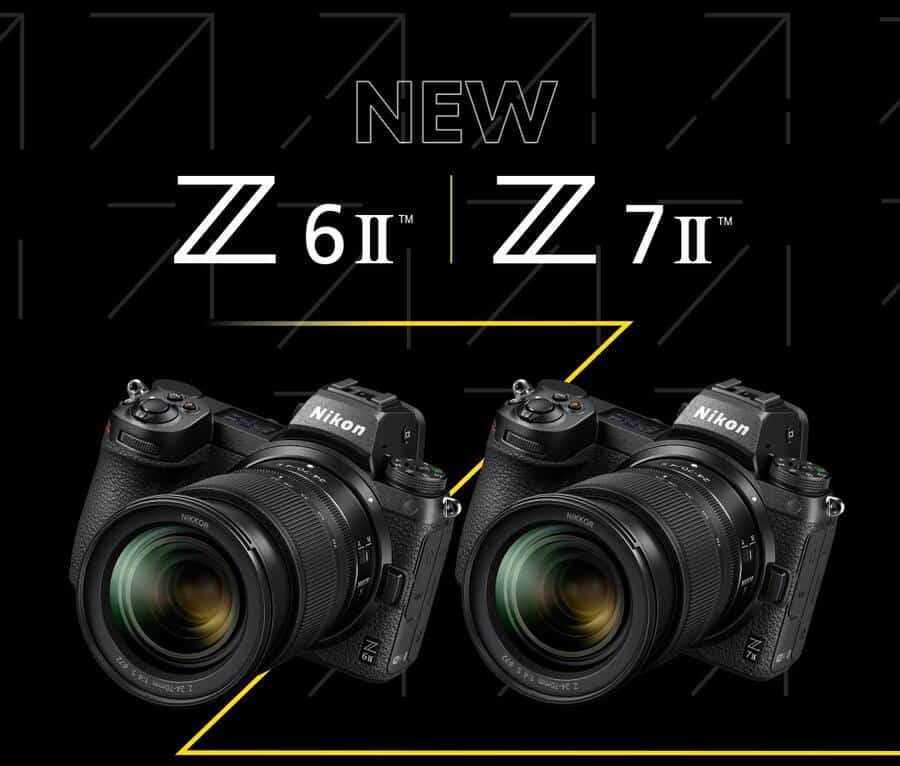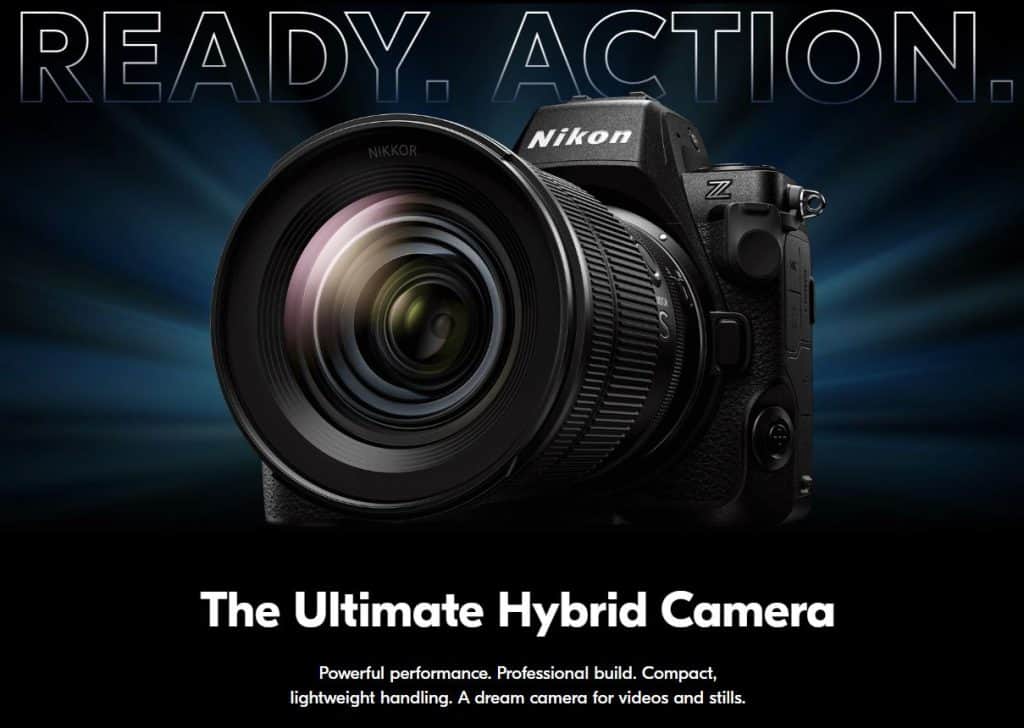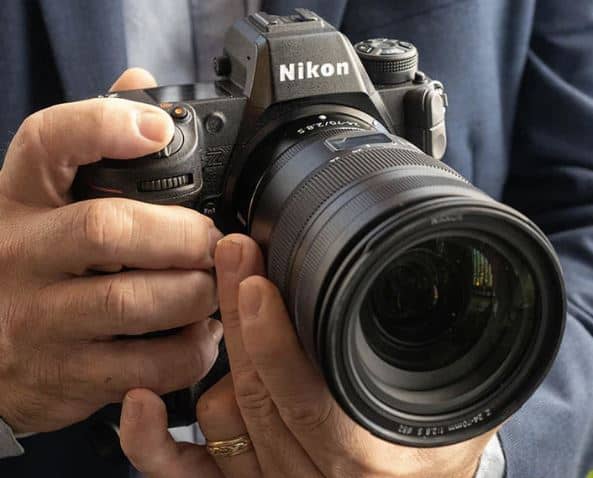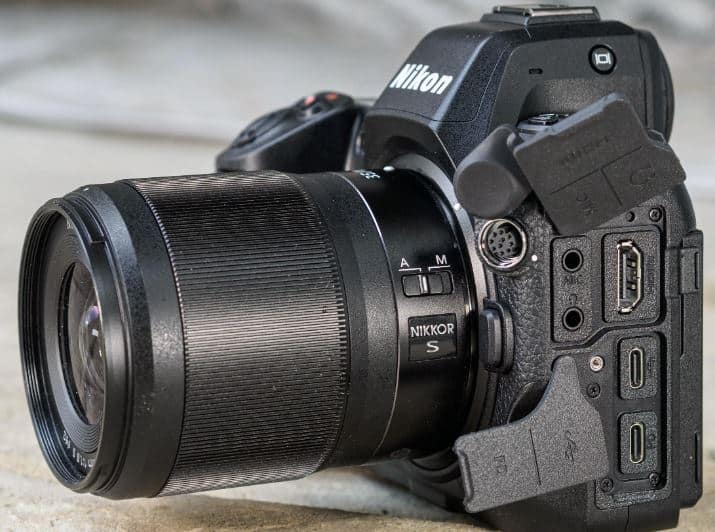
8 Reasons To Use A Mirrorless Camera for Wildlife Photography
There are 8 reasons why I think now is the time to make the move to a mirrorless camera for wildlife photography. I have been shooting with Nikon DSLR’s for[…]
Read the post.
The Nikon Z8 will be an excellent wildlife camera, with a 45.7 MP full-frame sensor, low light performance, fast auto-focus, a high enough frame rate to capture action and 8k video capabilities. For those wildlife photographers who carry two camera bodies, the higher resolution of the Nikon Z8 would be perfect for static wildlife paired with the Nikon Z9 for the fast-action high frame rate action.
The photography world is abuzz with excitement as rumors continue to circulate about Nikon’s highly anticipated mirrorless camera, the Nikon Z8. Nikon made a lot of waves with its Z9 mirrorless cameras and now the rumored Z8 is expected to take the photography world by storm. In this article, we will delve into the rumors, expectations, and speculations surrounding the Nikon Z8, and why it just may be the next best thing to the Nikon Z9 for wildlife photography. we can expect from this highly anticipated camera.
For those of you thinking about a purchase from B&H Photo or Camera Canada please consider using the links below. I receive a small commission to support my content creation efforts and there is no extra cost to you.
Nikon Z8 Mirrorless Camera with 24-120mm f/4 Lens B&H
Nikon Z8 Camera Body Only Camera Canada

The Nikon Z Camera Expert Set up Guide is 6.5 hours of comprehensive video walk-through of every menu setting, fn customization, autofocus mode, etc, for all Nikon Z Mirrorless cameras including the new Nikon Z8. Your host for this expert guide is working professional photographer, Matt Granger, aka Mr. Nikon.
To get the most from your Nikon Z8 camera you need the proper menu settings, function customizations, and an understanding of the various autofocus modes for your style of shooting. Once you’ve dialed in the correct settings you can begin shooting with confidence, knowing that your camera is set up the way it needs to be to capture your best images.
While that may sound easy enough, all of the menu settings and customizations that are possible can be overwhelming, especially if you’re new to the Nikon system. The user manual explains the technical side of each option but it falls short of explaining how, when, and why you should use each option.
That’s precisely what Matt Granger’s Nikon Z Camera Expert Set up Guide offers for those of you who are getting the Nikon Z8.
Nikon Z8 Technical Specifications
 The Nikon Z8 boasts some impressive features and specifications that are sure to excite wildlife photographers. I think of the Nikon Z8 as the mirrorless equivalent of the Nikon D850 in the DSLR lineup which was one of my favorite all-time Nikon cameras before I made the leap to the Nikon Z9. In fact, some might argue upon review of these specifications that the Nikon Z9 is really more of a baby Nikon Z9.
The Nikon Z8 boasts some impressive features and specifications that are sure to excite wildlife photographers. I think of the Nikon Z8 as the mirrorless equivalent of the Nikon D850 in the DSLR lineup which was one of my favorite all-time Nikon cameras before I made the leap to the Nikon Z9. In fact, some might argue upon review of these specifications that the Nikon Z9 is really more of a baby Nikon Z9.
Resolution: 45.7 megapixels
Sensor: 35.9×23.9mm FX Full-Frame
Video Resolution: 8K
Continuous Shooting Speed: 20fps
Auto Focus Points: 493
Lens Mount: Nikon Z
Shutter Speed: 30sec – 1/32,000sec
ISO Sensitivity: (32) 64 – 25,600 (102,400)
Screen Size: 3.2″
Recording Media: SD, CFexpress (Type B), and XQD
Frame Rate: 120fps (4K and 1080p), 30p (8K)
Audio Inputs: 3.5mm stereo minijack
Power Source: EN-EL15C, EN-EL15a/b/c,
GPS: Yes
Weatherproof: Weather resistant
Dimensions: 14.4×11.9×8.3cm
Weight: 910g
This high-resolution 45.7 MP sensor will deliver the same unprecedented levels of detail and image quality as the Nikon Z9 because it is the exact same sensor. The ability to crop in on wildlife subjects taken from a distance was game-changing and that’s about to go to a new level of wow.
In addition to the high-resolution sensor, the Nikon Z8 features a respectable ISO Sensitivity rating for improved low-light performance. This would enable photographers to capture high-quality images even in challenging lighting conditions, making the Z8 a versatile camera for wildlife photographers. Of course, specs like these are never mirrored to real-world performance so it remains to be seen what the useable ISO will be without becoming too noisy and unrecoverable. As a rule, the higher the megapixel count, the harder it is to keep noise at bay so we will have to do some testing on that front. Given the ISO sensitivity is the same on paper as the Nikon Z9 the Z8 should be comparable.
Another feature of the Nikon Z8 that mirror the Z9 is its autofocus system. The Z9 camera has already gained a reputation for its excellent autofocus capabilities with 493 auto-focus points. The Nikon Z8 therefore should contain the same advanced autofocus system with improved subject tracking, eye detection autofocus, and faster autofocus performance. This would be a huge leap forward for anyone who is still shooting a DSLR and enjoys shooting action. If it performs as I expect it will, this will make the Nikon Z8 AF very attractive to the wildlife photography community.
Furthermore, the Nikon Z8 has a continuous shooting rate of 20 frames per second. (fps) This makes the Nikon Z8 a winner for capturing fast-moving wildlife subjects and birds in flight. The camera is also expected to have a large buffer capacity to accommodate high-speed continuous shooting, allowing photographers to capture a large number of frames in a single burst.
To offload these larger file sizes demands the fastest cards possible to clear the buffer. If you’re looking for the fastest CFexpress cards that can handle the required speed for offloading when shooting large bursts you’ll want to read my post called, Best CFexpress cards for fast write speeds.
Note: This post was written with the Nikon Z9 in mind, however it applies equally to the Nikon Z8 given the sensor and burst rates are the same. You’ll want to set the camera up to write to the CFexpress card as the primary because the secondary card slot is a much slower SD card with a transfer rate that will not handle to load.
Video capabilities is another significant aspect of the Nikon Z8. The camera is capable of shooting 8K video, which provide videographers with unparalleled levels of resolution and detail. Additionally, the Z8 is expected to have advanced video features such as in-body image stabilization, high-quality video codecs, and various video shooting modes, making it a versatile tool for wildlife videography.
Design and Ergonomics

The design and ergonomics of the Nikon Z8 as expected follow the design language of the existing Nikon Z series cameras. The Nikon’s are known for their modern, sleek and ergonomic design and I have always felt that they feel very comfortable in the hand which is important on long hand-held shoots. The Nikon Z8 features a durable, weather-sealed magnesium alloy body, similar to the current Z7 II and Z6 II models, providing robustness and reliability for wildlife photographers in various shooting conditions.
The Z8 has a very similar form factor to the Z7 II, with a comfortable grip and intuitive button layout for easy handling and operation. Nikon is known for its attention to ergonomics, and the Z8 continues this trend, providing a user-friendly interface and controls that are easily accessible for quick adjustments while shooting.
No surprise here, the Nikon Z8 features a high-resolution electronic viewfinder (EVF) with a high refresh rate and minimal lag, providing a lifelike view of the scene being captured. The EVF offers a high magnification and a wide field of view, allowing for precise composition and focus accuracy. An additional grip has been made available, you can order it from B&H under Nikon MB-N12 Battery Pack or from Camera Canada also under Nikon MB-N12 Battery Pack. I’ve always added a grip to my Z series cameras for balance with longer lenses and the ability to hand-hold vertically more comfortably.
Connectivity and Storage

In today’s digital age, connectivity and storage options are essential features in modern cameras. The Nikon Z8 offers advanced connectivity options, including built-in Wi-Fi, Bluetooth, and NFC for seamless wireless image transfer and remote camera control. This would enable photographers to quickly and easily share their images with their mobile devices or other devices for instant editing or social media sharing.
The Z8 has dual memory card slots, one supporting the popular XQD or CFexpress format for high-speed data transfer and reliable storage. The second card slot is an SD card which is a little disappointing given the slower transfer rates. I suppose the smaller form factor of the Nikon Z8 necessitated that design.
Dual memory card slots provide the convenience of backup storage or simultaneous recording of RAW and JPEG files. I have my Nikon Z9 setup on card 1 for stills and card 2 for video. The Z8’s SD card is unlikely to be able to handle the speed required to offload 4k and 8k video so you’ll need to send both stills and video to the CFexpress card in slot 1.
Other Features
In addition to the specifications and design that we’ve covered thus far, there are several other features worth mentioning.
The Nikon Z8 was highly anticipated by the wildlife photography community and it did not disappoint. As a baby Z9 it offers 95% of what the Nikon Z9 offers in a smaller form factor. If you’re looking for a top-performing Nikon mirrorless camera that is lightweight the Nikon Z8 is it.
Pre-orders for the Nikon Z8 have been through the roof so if you did not order in week 1, if it’s anything like the Nikon Z9, you should expect a rather lengthy delay in receiving the camera.
Pre-order the Nikon Z8 from B&H for $3996.95
Pre-order the Nikon Z8 from Camera Canada for $5399